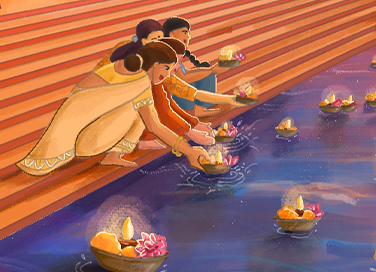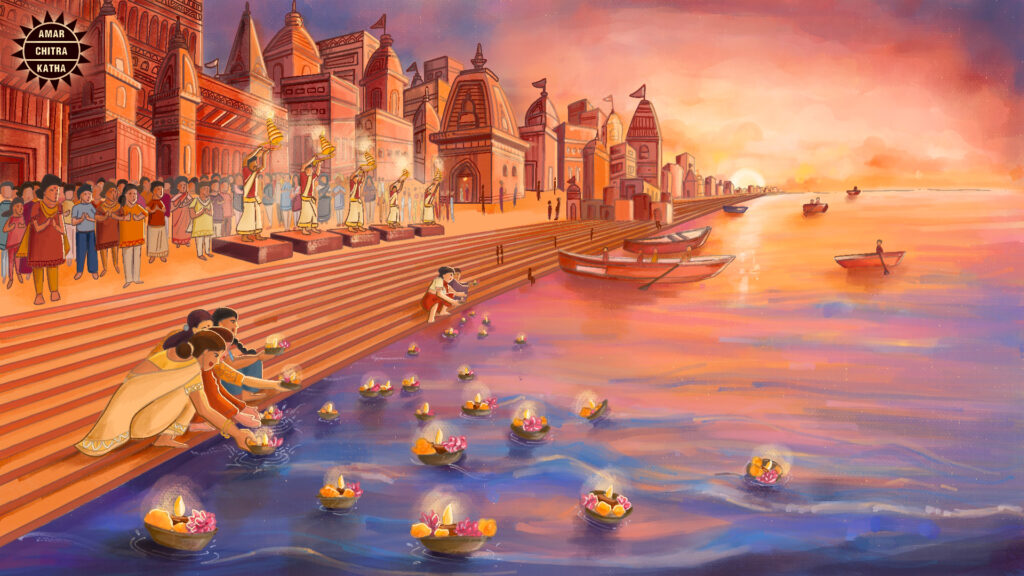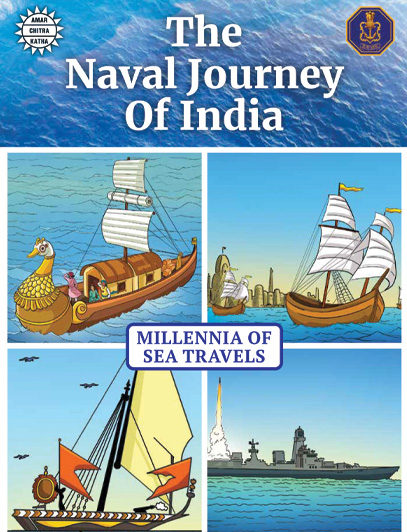Stories of Ganga
- May 23, 2025


Stories of Ganga
- May 23, 2025
By Srishti Tripathi
A golden hush blankets the ghats of Haridwar and Varanasi, and priests clad in saffron robes emerge from the dimly lit ghats, their steps deliberate with a rehearsed prayer. The Ganga Aarti has begun. The scent of sandalwood and marigold wafts through the air, and the glow of diyas set afloat in the river look like tiny suns across the water. Cymbals clash, and pilgrims, travellers, and the locals turn around in awe, and bow to the holy waters of Ganga.
The biggest river in India, Ganga is known by various other names, such as Jahnavi, Gange, Shubhra, Sapteshwari, Nikita, Bhagirathi, Alaknanda, and Vishnupadi. The Ganga is beyond a river. A dip in her waters is believed to achieve, what a pilgrimage to the Tirthas (holy shrines) cannot. Her purifying abilities are immense. Her banks have witnessed the rise and fall of civilizations. Nothing compares to her eternal divinity and mystique.
To receive more such stories in your Inbox & WhatsApp, Please share your Email and Mobile number.
Throughout history, the river has been the subject of many myths and legends. The most renowned tale is about King Bhagiratha, who prayed to Lord Brahma, prompting Goddess Ganga to come down to Earth – only she could bestow nirvana to Bhagiratha’s ancestors who were cursed by Sage Kapila. However, Ganga herself did not know the immense power that she held, and the Earth was not strong enough to hold the mighty river. In fear and desperation, Bhagiratha turned to Lord Shiva for help. Shiva appeared before him and agreed to let Ganga flow through his locks of hair. When Ganga ascended from Heaven, her torrents of water hit Shiva with full force on the head. Her mighty waterfall splashed through his long hair and cascaded down to the Earth below in seven fast-flowing streams. Instead of destroying the Earth, Ganga splashed off Shiva’s tangled hair – brought life to the land, purified Bhagiratha’s ancestor’s souls and freed them from their curse.
In the Vishnu Purana, it is said that the river was born from the toe of Lord Vishnu’s left foot. As she flowed down from the heavens, the pole star Dhruva held her, while the seven great sages bathed in her waters. On her journey, Ganga touched the moon, increasing its brightness, and finally descended to Earth on Mount Meru. From there, she split into four branches, each flowing in a different direction to purify the world. The southern branch, called Alakananda, is considered the most sacred. According to legend, Lord Shiva held this stream in his matted hair for a hundred divine years before letting it flow gently down to Earth. This is why Lord Shiva is often shown with a crescent moon on his head and a stream of water flowing from his hair.
Another story tells of the Sage Durvasa and the curse he cast upon Ganga, the goddess. Known for his short temper and extraordinary powers, he was feared by the Hindu gods and mortals alike. His wrath was a force to be reckoned with and those who crossed him did so at their own peril. One day, while he was visiting the heavens, a sudden gust of wind swept through, catching a piece of his attire, and sent it flying. Aware of the sage’s volatile nature, the gods turned their gazes away. However, little Ganga, in her youthful innocence, unaware of the sage’s reputation, burst out laughing at Durvasa. Taking offence at her perceived slight, the sage became enraged and cursed her. He condemned her to become stripped of her divine status in the heavens, and flow as a river across the earth. A devastated Ganga sought mercy and fell at his feet. Filled with regret, and unable to retract his curse, he chose to balance it with a blessing. He declared Ganga as the purest river in the entire world, allowing those who bathed in her waters to cleanse themselves of all their impurities.
The stories of Ganga’s purifying abilities can be traced back to the arrival of ancient Vedic communities from the Indus Valley to the Ganga basin. Over time, more stories and legends came to be known, turning the river into a symbol of holiness and hope. According to the Hindu tradition, the mere sight of Ganga, touching her waters, or even whispering her name under one’s breath can cleanse a person of their sins. It is said that even the worst of wrongdoings, can be forgiven by Ganga’s grace. For this reason, water from the river, known as Gangajal, is used in nearly all Hindu ceremonies, symbolizing purity and devotion. The Ganga is often also called Patita Pavani, which means “the purifier of the fallen”. People believe that even the smallest drop of Gangajal at the time of death, can purify a soul. Bathing in the river is believed to help one on the path to moksha, or spiritual freedom.

So many stories, passed down through so many years, around a river ever so eternal: born from Vishnu’s toe, tamed by Shiva’s might, faced with Sage Durvasa’s fickle wrath. Yet, the thread that holds together this purifying grace is fraying today with the weight of modern life and the relentless tide of pollution, that threaten to erode the very essence of the river.
The Ganga is not just a river, or a goddess. She is a symbol of forgiveness, love, and divine grace. No other river is mentioned as frequently in the Puranas, and none holds as much spiritual importance. The sacred river continues to be a source of faith for millions, and her waters remain a vital part of rituals, prayers, and the spiritual life of India. Each time we bow to the holy waters of Ganga, what responsibility do we carry for her future? Can a river bear the weight of both our faith and neglect? The pen is your hand, dear reader. What chapter will you write, for the next chapter in this story of Ganga?
Read more about Ganga and other Divine Rivers in India at our own ACK Comics App.
To receive more such stories in your Inbox & WhatsApp, Please share your Email and Mobile number.

Comic of The Month
The Naval Journey of India Book I
This book is the first of a three-book series that takes a deep and detailed look at India's Naval History and a deep insight into the lives of our men and women in white. But any series on the Indian Navy has to start at the very beginning - exploring India's celebrated maritime history. Join our little hero, Bharat, and his grandfather, Commodore Sagar, as they sail into the deep blue waters of time. Book I of The Naval Journey of India takes a sweeping look at India's maritime endeavours, how the seas impacted us over millennia and how the oceans made us who we are.